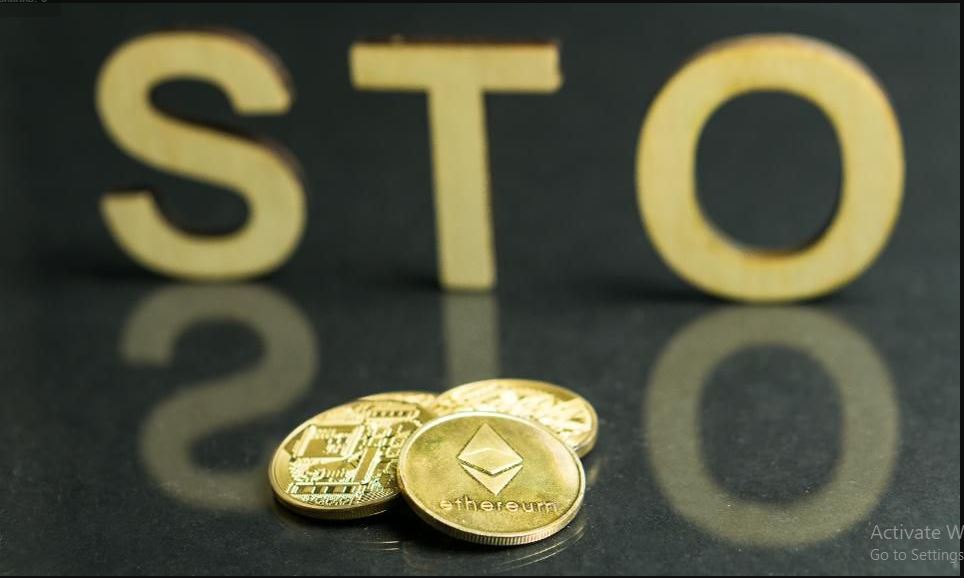Bitcoin Aside, After ICO’s Are STO’s The Everyman’s IPO?
The death of the Initial Coin Offering (ICO) – while overstated – is more an evolution of this popular crowdfunding mechanism than a demise. Having reached dizzying heights and helped projects raise billions of dollars in funds, the ICO market also caused millions in losses and produced shockingly few success stories.
And, there’s certainly been a lot of noise in the space that has been peppered with more than a few projects that fizzled out – not reaching anywhere near the expectations or hype.
The dazzling rise of the ICO model, which galvanized the blockchain industry, was slowly derailed by a mix of failed products, high-profile frauds and scams, and a sense of general lawlessness that scared retail investors away.
Even so, the market has survived, though its days of pure optimism seem to be over. Indeed, despite raising just north of $21.5 billion in 2018 according to data compiled by Coinschedule.com, the bulk of that figure for ICOs came during the first six months of the year, after which the sector as a whole failed to reach the same dizzying highs in the year’s next five of six months.
Just over half of the funds raised last year by industry category according to these figures were accounted by just three sectors accounted, namely: 1. Infrastruture (25.2%); 2. Finance (15.3%); and, 3. Communications (10.1%).
The numbers are certainly up from 2017 when according to figures collated by ICOData.io a total of 875 ICOs raised over $6 billion and in 2018 there were 1,257 ICOs that accounted for in excess of $7.85 billion. Statistical differences aside between the two sets of data, ICOs have clearly been a viable method of crowdfunding to bring new technological ideas to life.
Although ICOs remain a force within the industry, the unbridled enthusiasm they once garnered has led to cautious acceptance and calls for a stronger, more transparent fundraising vehicle.
Increased scrutiny from regulators, consumers as well as the broader industry means that ICOs cannot carry on in business as usual mode. Instead, the sector must look for ways to improve the confidence in their fundraising model and regain the trust it lost in a barrage of failures and scams.
While ICOs have had an entire industry built around “reporting” on new ICOs (i.e. platforms rating ICOs), very few offered actual screening and restraint when listing projects, leading to reports of fraud and pay-for-play schemes.
One outcome of this need for change is the rise of Security Tokens’ (STOs) sales, a more transparent investment vehicle. The other, and perhaps more important one, is that the industry itself has recognized the need for screening to protect investors and the sector’s reputation. As the dawn of the STO has shown, the enthusiasm for blockchain still exists, but it requires a more trustworthy approach.
At its basic level an STO is just an Initial Token Offering (ITO) that is approved by federal regulators. And, some argue that it is fundamentally just an evolution, but still fundraising with tokens.
In essence a security token represents an electronically wrapped stake or share in a private interest or company – and can extend to assets such as real estate, trusts, LLC, fine art, and so on.
Often, security tokens give holders entitlement to a form of equity or ownership of a specific asset, either fractionable or whole, as well as the expectation of profit through revenues, dividends or favorable price movements. In other words, security tokens are an investment contract similar to those of traditional financial instruments.”
According to the fintech podcast, Crypto and Blockchain Talk (Episode 44),STOs are more like the “everyman’s IPO”, giving everyone the chance to invest in a company that has been approved by the U.S. Securities & Exchange Commission (SEC) to list their cryptocurrency as a security, and hold a ‘stake’ in the company by holding those coins or tokens.
Given that it’s not just for accredited investors who have a high net worth, the “STO will allow everyone to participate,” ventured Aviva Õunap, host of the Crypto and Blockchain talk podcast.

Creative ICO (Initial Coin Offering) backdrop with use of 3D rendering. (Photocredit: Getty).GETTY
STO’s Potential?
One might well ask though, are STOs really game changing and are they the new ICO model? The jury might be a little out on this.
“There’s a lot to put right in this space [crypto/blockchain],” asserted Hirander Misra, CEO and founder of GMEX, CEO of British-based GMEX Group, a technology and business services provider for traditional exchanges as well as cryptocurrency and digital token exchanges, when we met last week at the firm’s offices at the Royal Exchange in The City.
Misra, formerly co-founder and COO of Chi-X Europe (now part of CBOE Global Markets), added: “Now with everyone comparing STOs to ICOs, no one has really got under the hood around the landscape. That said, it presents a great opportunity for STOs to get things right and potentially be game changing. Central though to developments will be establishing trust between parties – that’s fundamentally key.”
There is even a certain amount of semantics over the actual terminology around the area of security tokens (STOs). As a recent article by Coindesk interestingly attested to this point, there is a distinction between Security Tokens and Tokenized Securities. And, unlike traditional crypto assets they are securities.
And, in Britain the Finance Conduct Authority (FCA), the regulator, issued a 50-page consultation paper this January (Guidance on Cryptoassets) with the aim of providing “regulatory clarity” for market participants involved in the space. In line with the U.K. Cryptoassets Taskforce, the FCA has categorized cryptoassets into three types of tokens: 1. Exchange tokens; 2. Security tokens; and, 3. Utility tokens.
As the FCA’s paper (CP19/3*), which runs until April 5 2019 for responses, points out: “As with cryptoassets, while there is no single formal definition of DLT [Distributed Ledger Technology], it can be described as a set of technological solutions that enables a single, sequenced, standardized and cryptographically-secured record of activity to be safely distributed to, and acted upon by, a network of varied participants.”
Others, like Melanie Mohr, CEO of WOM, a blockchain project helping brands, creators and platforms monetize “word-of-mouth” recommendations, broadly echoing GMEX’s Misra’s comments said: “People are looking for a way to bring maturity to the crypto space and offer more regulation and security.” But whether we are talking STOs or ICOs, the Berlin-based executive added: “You can’t just necessarily cut and paste the same funding models.”
Death of ICOs & Dawn of a Better Model?
It would be foolish to say that token sales are dead, as the year-end results from 2018 and a relatively decent showing at the start of 2019 demonstrate. Even so, it is hard to deny that the once shining beacon of blockchain is decidedly unsustainable over the long term.
And, although they are a terrific fundraising method for entrepreneurs, ICOs tend to put investors at a severe disadvantage since – until recently – as there were very few safety nets for them.
This was the result of the “Wild West” mentality and a general lack of regulations that pervaded throughout the early days of ICOs – and even well into 2018. Even so, the rising chorus of complaints, along with enough reporting on the perils of coin offerings, resulted in action by regulators worldwide.
The SEC, for instance, stepped up its oversight and other countries soon rolled out their own regulations to crack down on the sector. Additionally, the failure of a majority of ICOs and the emergence of more investor-friendly STOs, as well as internal screening applications and services, has led to a brighter outlook for the sector.
Rising Demand For Transparency Breathes Life Into STOs
STOs are said to operate with greater trust (than ICOs), as the tokens they distribute come with more rights for investors (see above).
Companies can offer digital security tokens for a variety of otherwise illiquid assets, while investors can purchase securities in their preferred investments with lower risk.
The companies are already starting to round out the new ecosystem. Take Overstock’s tZERO, for instance. It looks to provide a more open digital securities market and provide a fully SEC and FINRA regulated ecosystem for traders and prospective projects alike – a big mission that only time will tell how long it will take for the company to complete.
Similarly, other companies have tried to apply their own approaches to the STO model. Others, like Polymath, offer a much broader approach, whereby the company allows any business to tokenize their existing securities, and includes a broad array of tools to secure the investment process.
Yet another manifestation of this new STO paradigm CentrumCoin, a new platform that promises to clean up the STO/ICO market and provide a better way for consumers to invest while remaining protected.
Patrick Storchenegger, co-founder of Ethereum Foundation and CEO of Centrum Holding AG, shakes hands with Maksim Dudarev, President of VPE Bank at CentrumCoin’s headquarters in Budapest this January, in an act symbolizing the promise of tokenized securities and security tokens. (Photocredit: CentrumCoin). CENTRUMCOIN
The company, which has applied to become regulated by the Swiss financial authority FINMA, has built an entire ecosystem based on the idea of transparency and protection.
CentrumCoin’s model requires companies that list on their platform to complete a rigorous “pre-screening” that includes an expert audit, approval by their board and an interview. Moreover, the platform’s token-holders benefit from the projects listed on CentrumCoin thanks to an innovative dividend model – receiving dividends from the various projects invested in.
At CentrumCoin’s recent New Year’s event in Budapest, it revealed partners such as VPE bank – a German financial banking service aimed at investors and new projects – Bitbay – one of the first fully operational decentralized exchanges – and Tekinvest, which focuses on building and implementing IT systems.
These partnerships will provide “the proof that beyond buying blockchain startups, many reputable, large public companies are already dabbling in [blockchain]”, the protagonists behind the venture assert. More importantly, in Weber’s eyes, they signify that “mass adoption of cryptocurrencies and blockchain is already around the corner.”
According Tamas Weber, CentrumCoin’s CEO, these types of partnerships “provide our authenticity, both medium- and long-term, and makes us -jointly with our partners – capable to reach our ambitious aim of changing the current conventional business models.”
The goal of Weber, a Hungarian based in Zug in Switzerland, is to “transfer the useful elements of the centralized financial world into the decentralized online marketplace”, and to “merge the best of two worlds without the drawbacks and make blockchain applicable in everyday life.”
CentrumCoin’s model relies on transparency, since its users only profit from projects that achieve success. As such, the model is touted as incentivizing a more open approach to screening STOs and providing users with a much clearer picture of the ecosystem.
As the industry embraces this new self-regulated fundraising methodology, these kinds of platforms that provide a solid due-diligence process to projects they support could become the new norm instead of a cutting-edge concept.
Blockchain Fundraising Still Alive & Kicking
More importantly, these platforms show that the sector is growing up. Instead of continuing with unsustainable practices, more blockchain firms will choose the path of oversight and transparency.
Its face may be fast evolving, but blockchain fundraising is far from deceased. While ICOs are quickly losing their popularity over self-inflicted wounds, STOs are quickly emerging to supplant them. More importantly, as those within the sector understand that transparency and restraint is better than extinction, more companies will emerge that help projects raise funds – without putting their stakeholders at risk.
The ICO lives on, as it becomes apparent that the sector’s participants have finally realized that short-term gains are more harmful than a measured approach, ensuring blockchain’s growth and stability alongside their own as well. But further regulatory clarity in the space would do no harm either. Carpe diem.
Source : Forbes






